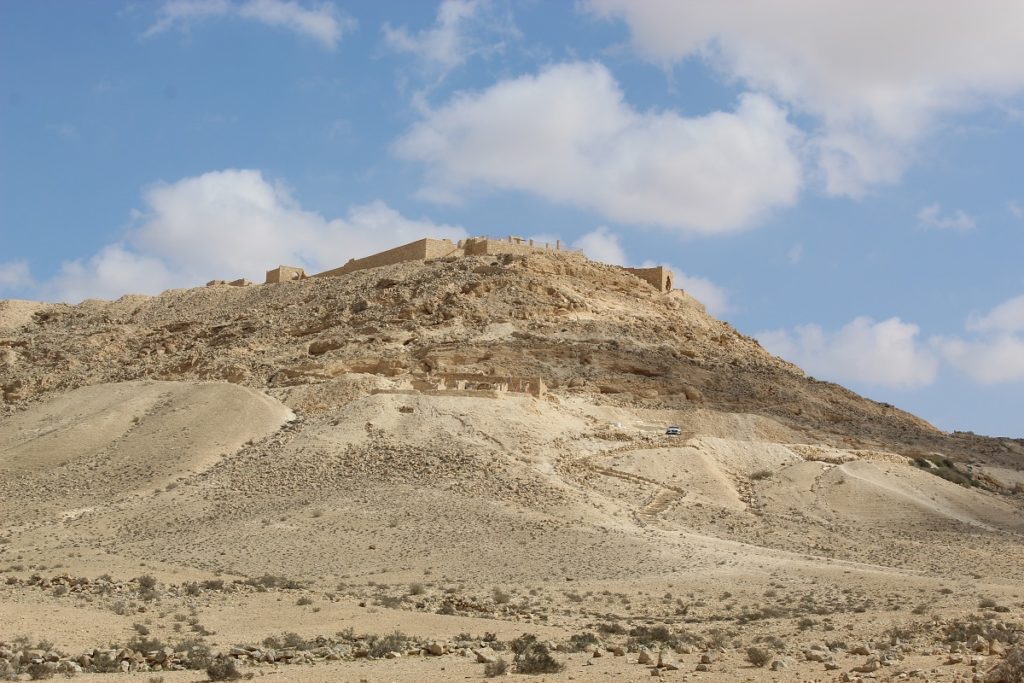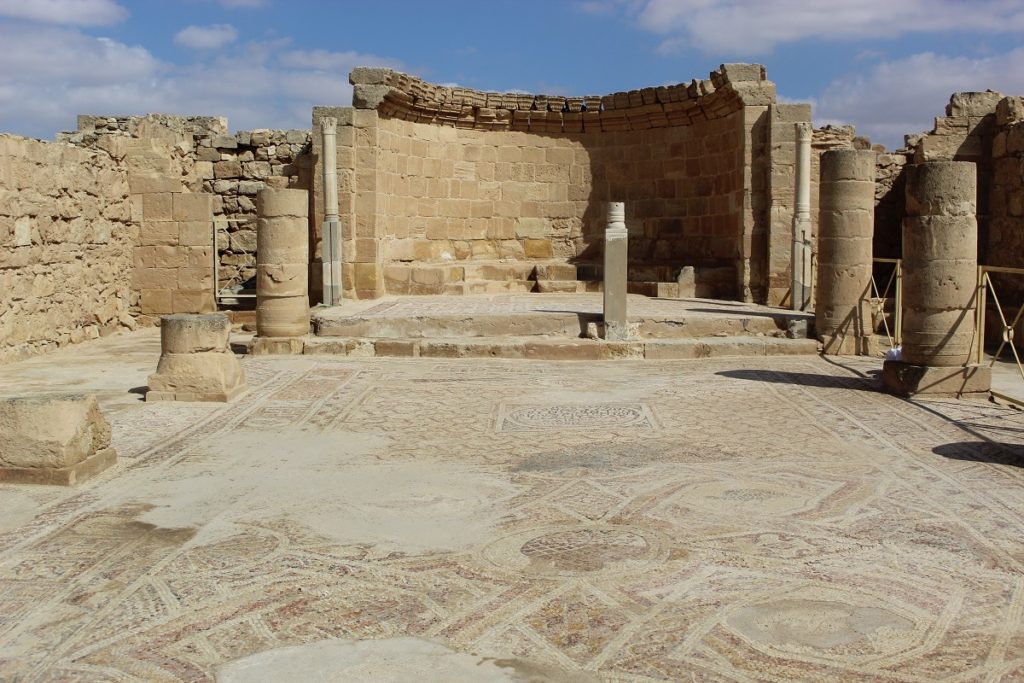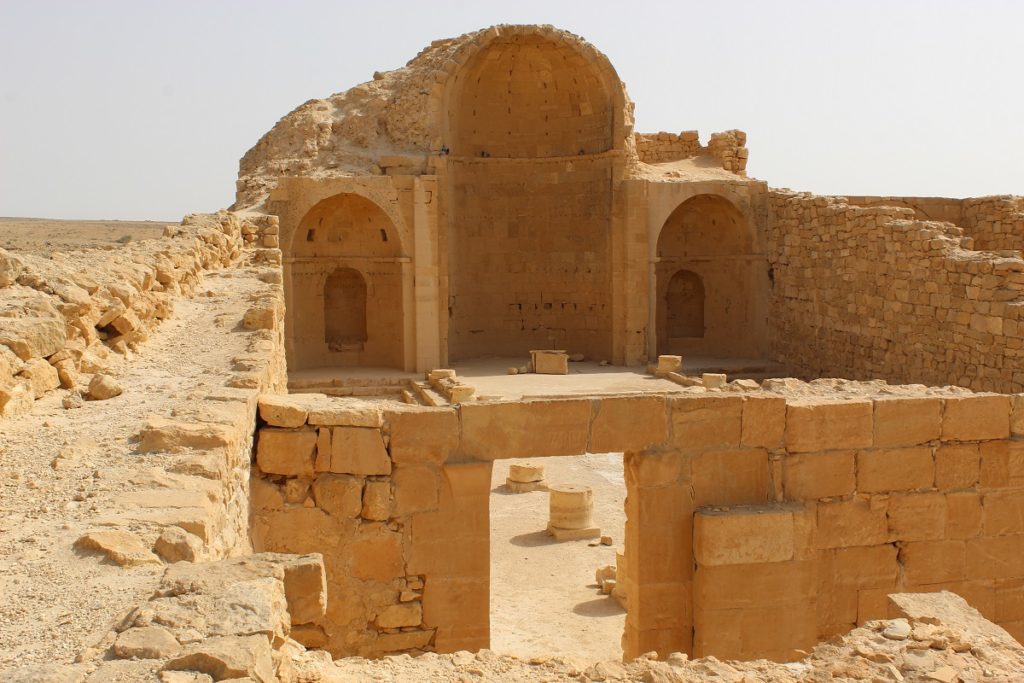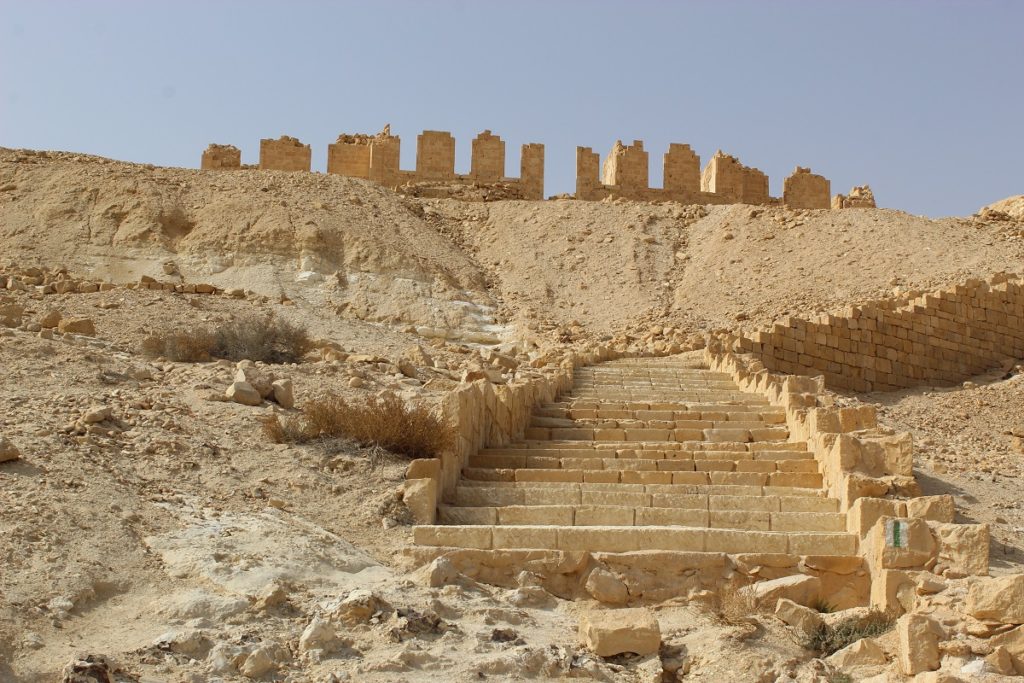Masters of the incense route
From time immemorial, there was a demand in Europe for spices and precious items from the East. The only route (via Yemen) to Europe (via Gaza) was overland, across 2200 km of empty desert as there was no economic sea route.
That is, until 25 AD , when the Red Sea route opened. The Nabateans moved the merchandise in vast caravans of camels from waterhole to fortified station, some of them becoming walled cities for the feeding, resting and protection of man and beast as the trade grew. The journey took 62 days. 3000 tons of goods traveled this road on average each year.As good businessmen, they were able to reinvent themselves
After the opening of the sea route during the first century of our era, Nabateans had to reinvent themselves, and having mastered the techniques of collecting rain waters they became farmers and, as was the case in Mamshit, horse breeders, reaching a certain level of prosperity.
Who were the Nabateans?
The Nabateans were not a people in the sense of having a distinct culture and language (they spoke a dialect of Arabic), they were part of a transportation business that survived and flourished precisely because it was just a business. They paid taxes and gave allegiance to the empires and domains through which their caravans passed and in return they received protection from the armed raiders who preyed upon them.
When Rome was master they worshipped Roman Gods. When the Byzantine empire replaced Rome, they adopted Christianity, when the armies of Mohammad swept through, they converted to Islam. There was never any resistance. The unfortunate consequence of this state of affairs is that we have no written record of their way of life. If the Nabateans had not been mentioned [in passing] in other peoples’ written records, we would have no way of knowing who it was who built these remarkable cities as they were all abandoned for different reasons during the 8th century.
What did they become after that?
They most probably became nomads and many believe the Bedouins to be their direct heirs.
The Nabatean cities in the Negev
Apart from Petra [in Jordan], which was of course their capital city (company HQ), all of the Nabatean cities are situated in the Negev. There are five of them, three of which can be visited and are at a traveling distance from our guesthouse.
- Avdat:
Originally a simple fortified station later transformed into an important part of the defense and transportation system during Roman times.

It is the biggest of the five and by far the most visited. It is 10 minutes away from the guesthouse, on your way to Mitzpe Ramon.
2. Mamshit.
The smallest but best preserved one with – among other things – huge mosaic floors. It gained it’s prosperity by breeding Arabian horses. It is situated half an hour away, on your way to or from the Dead Sea.

3. Shivta
According to some archeologists, it might never have been part of the incense route but was mainly an agricultural settlement.

We find it to be the most charming and the most interesting. It is 35 minutes from the guesthouse but as it is tucked away on the 211 road to the (closed) Egyptian border, it is rarely visited.
4. Halutza
It is not visited as it is yet to be excavated. Largely buried under sand dunes, it is thought to have been an administrative center, and was one of the last stops before the port of Gaza.
5. Tel Nitzana
It is also close to the Egyptian border and road 211. It is the city that gave the most information about the Nabateans – a series of written documents were found during some digs. But its masonry was cannibalized by the Ottomans in the early 20th century and there is little left to see.

In the Ramon crater, there are two examples of non-city caravan stops most representative of the 65 stops that make up the totality of the Incense Road. A simple caravanserai (not attached to a city) near the water source of Ein Saharonim, and the Makhmal fort.
For further reading: The Incense and Spice Route and the Desert Cities in the Negev a comprehensive 223 page documents prepared in 2005 when UNESCO declared the Negev Nabatean cities of the Negev as world heritage sites.
This post is also available in:
 Français
Français
Author: Marion Krivine
French owner of Krivine Guesthouse in Midreshet Ben Gurion, together with my British husband John. A little piece of european greenery in the heart of the Negev Highlands, Israel. I have set out on this journey in order to provide our guests with the most accurate, up-to-date and comprehensive guide of the area. View all posts by Marion Krivine


More Nabataean locations than just the Negev
http://www.bbc.com/travel/story/20201022-saudi-arabias-little-known-ancient-civilisation?fbclid=IwAR3HyE0jV2-B6qhtZjaDaMZ2zyn4EpDkfAMNLWJh9ObAjLB9_LlhTXpeWpo
That is fascinating, thank you! I am sure once Saudi Arabia is more open to archeological digging, a lot more will be discovered there and maybe we will get to know more about the Nabateans.
Also, the fact it was abandoned during the 1st Century with the end of the use of the spice roads doesn’t contradict the claim made here that Nabatean cities in Israel are a unique case of Nabateans settling down and working the land as farmers until the 8th Century. Shivta was not even part of the incense road. But I must admit that if tomorrow, another bustling agricultural community is discovered in the desert of Saudi Arabia or anywhere else for that matter, I will find it totally thrilling.
Thanks for your blog, nice to read. Do not stop.